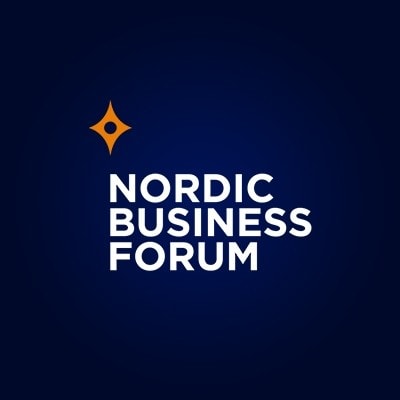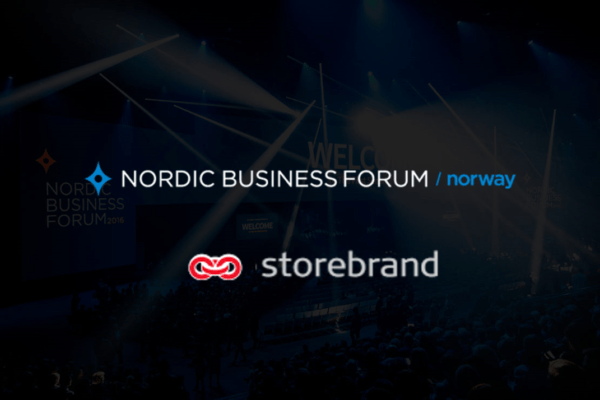3Jan2018
To continue our NBFSweden and NBFNorway 2018 Speaker Spotlight series, we warmly welcome Seth Godin!
Seth Godin is the author of 18 bestselling books that have been translated into over 35 languages and have changed the way people think about marketing and work. He writes about the post-industrial revolution, the way ideas spread, marketing, quitting, leadership, and, most of all, changing everything. You might be familiar with his books Linchpin, Tribes, The Dip, Permission Marketing, and Purple Cow. His latest book, What To Do When It’s Your Turn, is about doing work that matters, embracing tension, dancing with fear and making a difference.
His blog (which you can find by typing “seth” into Google) is one of the most popular in the world. In addition to his writing and speaking career, Seth founded both Yoyodyne and Squidoo. We recently spoke to Seth about his upcoming appearances at NBFSweden and NBFNorway.
Nordic Business Forum: Hi Seth! We’re excited to welcome you back to our stage very soon to hear you speak about the differences between leadership and management and the value of that distinction. Could you give us a sneak preview of what to expect?
Seth Godin: Well, this is almost never spoken about, and it’s at the heart of why it’s so difficult to be a leader. Management is only 100 years old, and it’s the idea of getting people in a factory to do what you tell them to do. And management is responsible for the Industrial Revolution. It’s responsible for increasing certain kinds of living standards. Management is about getting people to do what they did yesterday, but a little faster and a little cheaper. It’s about authority and compliance. That’s what we’ve grown up to think people in charge are supposed to do because that’s the way school works, that’s the way our first job worked… And then we hear people talk about leadership. We think that leadership is just a fancy way of saying management, but it’s not. They’re not alike at all. Leadership is only possible with the enrollment of the people you are leading. You can’t lead someone against their will. You can’t force someone to be led. And if people are enrolled, what the leader can do instead of telling them what to do is that she can outline a path, outline a goal, outline where we want to go, and then make it easy for us to follow her. That’s what leaders do and it’s scary work. It’s difficult work, and it often doesn’t get us what we sought, but it’s important.
NBF: Since the theme of the conferences is Lead Lean, how do you think lean principles apply to leadership?
SG: Well, there’s a lot of misconception about lean because people get excited about the idea that they can go faster and make a bigger impact. But they’re not so crazy about the failing part. And so they hide from the failing part. And when lean fails, it’s because we’ve talked ourselves into not mattering enough. We do it with the minimum viable product, for example. What people often do is they ship crap as a defensive mechanism. Then, when it doesn’t work, they say, “Well, of course, it didn’t work because I just spun something out really fast.” That’s not what an MVP is. And what it means to be lean is to expose yourself to the tension and expose yourself to the market.
And leadership is the same way. Leadership is about seeing others for who they actually are and not adding all of that fancy corporate doublespeak, or TPS reports, or the HR soft tissue, and instead gets down to the fact that we are all human beings, and we have a choice to make a difference if we want to.
NBF: What do you think is the biggest stumbling block that leaders face?
SG: Fear. It’s fear that is holding them back from making certain choices. When people train for a marathon they do not say to their coach, “I would love to run this marathon but I get tired. How can I run a marathon without getting tired?” No one says that because obviously, you get tired when you run a marathon. And the only difference between the people who finish the marathon and the ones who don’t, are they figured out where to put the tired. Well, the thing about lean and the thing about leadership is that we have to figure out where to put the fear because you can’t make the fear go away.
We used to be constrained by access to capital. But access to capital is rarely the problem now. What we’re constrained by is the fear of fear. The entire point is the fear. And figuring out where to put the fear, to dance with the fear, that’s what we’re trying to do. That being said, I think that we’re all better off thinking about how we contribute, not how we win. And for me, fear is a compass. If you’re pointing in the direction of fear, you’re probably contributing.
NBF: How practical do you think this is? Do you think business leaders will make this leap of faith and adopt lean principles in the future?
SG: Actually, I think almost no one will, just like almost no one started Facebook, just like almost no one built a solar panel factory… Because it’s easier to fit in, and our culture pushes you to fit in. So I’m not hopeful that me correcting the misconception of lean will change everyone; it’s never been my job to change everyone. But I know that 1 out of 1,000 or 1 out of 100 people that see this, they cannot unsee it. And once you see it, then you can dance with it, you can work with it, and you can do that work you care about. And so I’m not interested in the masses. I’m trying to be a meaningful specific. But who knows what that one person will go on to do.
NBF: Wonderful! One final question before you go: if people reading this interview learn only one thing from you, what should it be?
SG: The meta answer is: there’s a lot more than one thing to learn. And if you’re hoping to transform your life and the life of people around you while standing on one foot and reading a blog post, I think you’re probably going to be disappointed.
We’re excited to learn more from Seth Godin at NBFNorway and NBFSweden 2018! If you’d like to hear him and other leaders discuss this year’s theme of lean leadership, be sure to grab your ticket or Live Stream license today. Follow us on Facebook and Twitter, as well as by using #NBFNorway and #NBFSweden, to keep up with our speaker announcements as we get closer to the event!

 by:
by: 
